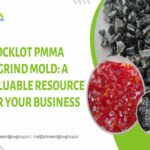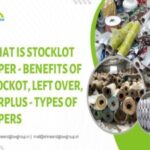- Introduction
- The Role of Masterbatches
- Types of Masterbatches
- 1. Plastic Transparent Additive Masterbatches
- 2. Pallets White Masterbatches
- 3. Granules Brown PE Color Masterbatches
- 4. White Non-Woven Masterbatch
- 5. Plastic Master Batches
- 6. Polychem Polypropylene Masterbatch
- 7. Colored Masterbatches
- 8. PET Colour Masterbatches
- Ensuring Quality and Efficiency
- Packaging Industry and Masterbatches
- Cost-Effective Solution: Stocklot Masterbatches
- Conclusion
- FAQs
Masterbatch manufacturers are key players in the plastic industry, providing concentrated mixtures of pigments or additives that simplify the color compounding process. The use of masterbatches saves time, reduces waste, and improves efficiency, producing consistent colors and performance in final products. There are various types of masterbatches available, tailored to specific industry needs, including packaging. Masterbatch manufacturers use high-quality raw materials and follow strict quality control procedures. Stocklot masterbatches provide a cost-effective solution for producing a specific color. In summary, masterbatch manufacturers are essential in achieving the desired color, effect, or transparency in plastic products, benefiting both manufacturers and consumers.
Introduction
Masterbatch manufacturers play a crucial role in the plastic industry, especially when it comes to color compounding. Color compounding involves the process of adding pigments or dyes to the plastic during the manufacturing process to achieve a specific color or shade. This process can be quite challenging, but masterbatch manufacturers have mastered the art of color compounding by developing high-quality masterbatches that help in achieving the desired color.
The Role of Masterbatches
Masterbatch, in simple terms, is a concentrated mixture of pigments or additives that are dispersed into a carrier resin. The carrier resin can be of the same material as the final product or a different one. The masterbatch is then added to the final plastic product in small quantities to achieve the desired color or effect.
One of the significant advantages of using masterbatches is that it simplifies the manufacturing process. Instead of having to add pigments or additives separately, manufacturers can use masterbatches that are tailor-made for their specific needs. This not only saves time but also reduces waste and improves efficiency.
Types of Masterbatches
There are various types of masterbatches available in the market, each formulated to meet specific industry requirements. Some of the commonly used masterbatches include:
1. Plastic Transparent Additive Masterbatches
These masterbatches are used to enhance the transparency or clarity of plastic products. They are often employed in applications where transparency is a desirable quality, such as clear packaging materials or optical components.
2. Pallets White Masterbatches
White masterbatches are widely used in industries where the color white is required, such as in the production of white plastic bags, containers, or films. These masterbatches ensure uniform whiteness and opacity.
3. Granules Brown PE Color Masterbatches
Brown PE color masterbatches are utilized to give plastic products a brown color. They find applications in various industries, including automotive, construction, and consumer goods.
4. White Non-Woven Masterbatch
White non-woven masterbatches are specifically designed for non-woven fabrics used in industries like agriculture, medical, and hygiene. They provide the desired white color and uniform dispersion.
5. Plastic Master Batches
Plastic masterbatches are versatile and can be customized for different applications. They are used in a wide range of plastic products, including household items, toys, and industrial components.
6. Polychem Polypropylene Masterbatch
Polychem polypropylene masterbatch is designed for polypropylene-based products. It enhances the color and performance of polypropylene materials used in various industries.
7. Colored Masterbatches
Colored masterbatches are available in a wide range of colors and shades. They are used to add vibrant colors to plastic products,
making them visually appealing and attractive.
8. PET Colour Masterbatches
PET color masterbatches are used in the production of PET bottles and containers. They provide consistent coloring and improve the aesthetic appeal of PET-based products.
Ensuring Quality and Efficiency
Masterbatch manufacturers prioritize the quality of their products. They use high-quality raw materials and follow strict quality control procedures to ensure that their masterbatches meet the industry standards. These procedures include testing for color consistency, dispersion, and compatibility with different plastic resins.
By maintaining high-quality standards, masterbatch manufacturers help achieve consistent color and performance in the final plastic products. This is crucial for industries where color accuracy and uniformity are essential, such as in packaging or consumer goods.
Packaging Industry and Masterbatches
In addition to color compounding, masterbatch manufacturers also play a vital role in the packaging industry. Packaging materials need to be visually appealing and stand out on the shelves. Masterbatches can be used to achieve the desired color, effect, or transparency in packaging materials, making them more attractive to consumers.
Whether it’s a vibrant color for a candy wrapper or a translucent effect for a cosmetic container, masterbatches offer a range of options to packaging manufacturers. The ability to customize the color and visual properties of packaging materials helps brands create a strong visual identity and connect with their target audience.
Cost-Effective Solution: Stocklot Masterbatches
Manufacturers often face situations where they need to produce a specific color but do not want to invest in producing a full batch of masterbatch. In such cases, stocklot masterbatches come to the rescue. These masterbatches are produced for a specific project but were not used or left over. They provide a cost-effective solution for manufacturers, allowing them to access the desired color without the need for extensive production.
Conclusion
In conclusion, masterbatch manufacturers play a crucial role in color compounding, packaging, and the overall plastic industry. Their high-quality masterbatches have simplified the manufacturing process and helped manufacturers achieve consistent color and performance in their final products. With a wide range of masterbatches available in the market, manufacturers can find the perfect solution for their specific needs.
By partnering with masterbatch manufacturers, businesses can benefit from streamlined color compounding processes, reduced waste, improved efficiency, and visually appealing products. Masterbatches offer a cost-effective and efficient way to achieve the desired color, effect, or transparency in plastic products. Embracing the expertise of masterbatch manufacturers is a valuable step towards success in the plastic industry.
FAQs
- What is a masterbatch?
A masterbatch is a concentrated mixture of pigments or additives that simplifies the color compounding process in the plastic industry. It is added to the final plastic product to achieve the desired color or effect. - Why are masterbatches important in the plastic industry?
Masterbatches save time, reduce waste, and improve efficiency in the manufacturing process. They ensure consistent color and performance in final plastic products. - How do masterbatch manufacturers ensure quality?
Masterbatch manufacturers use high-quality raw materials and follow strict quality control procedures. They conduct tests to ensure color consistency, dispersion, and compatibility with different plastic resins. - What are stocklot masterbatches?
Stocklot masterbatches are leftover or unused masterbatches produced for a specific project. They provide a cost-effective solution for manufacturers who need to produce a specific color without investing in a full batch. - What role do masterbatches play in the packaging industry?
Masterbatches help achieve the desired color, effect, or transparency in packaging materials, making them visually appealing to consumers and enhancing brand identity.
Get Access Now: [https://bit.ly
Read also About Stocklot Prices, Top Websites, Best Supplier, Products



